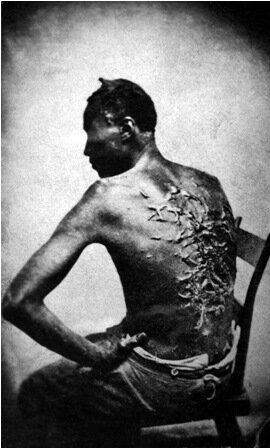If you live in America, you should know one of these following facts about slavery in America since you should also know the history behind it. If you live now in freedom, then you at least must give a proper honor to those who supported anti-slavery in the past. Slavery had been practiced in British North America from early colonial days, and was firmly established by the time of the United States’ Declaration of Independence (1776). To get to know more about it, here are other facts about slavery in America you may consider really interesting.
Facts about Slavery in America 1: First Official Slave Owner
The first official slave owner in America was an Angolan who adopted the European name of Anthony Johnson. He was sold to slave traders in 1621 by an enemy tribe in his native Africa, and was registered as “Antonio, a Negro” in the official records of the Colony of Virginia. He went to work for a white farmer as an indentured servant.
Facts about Slavery in America 2: Slavery Prohibition
Although the international slave trade was prohibited from 1808, internal slave-trading continued apace, and the slave population would eventually peak at four million before abolition.
Facts about Slavery in America 3: Lifted Slavery
James Oglethorpe (1696–1785) was a British general who founded the colony of Georgia in 1732. From the very beginning, Oglethorpe ensured that slavery was banned in the colony, and that Africans were barred from entering the territory. The colony’s founding charter also forbid Roman Catholicism from being established in the region. It was only in 1750, after Oglethorpe had left the colony, that the ban on slavery was lifted.
Facts about Slavery in America 4: Uncle Tom’s Cabin
In 1852, a novel titled “Uncle Tom’s Cabin” written by Harriet Beecher Stowe was published. This novel also became one of the most influential works to stir anti-slavery sentiments.
Facts about Slavery in America 5: Slavery Ended
In 1865, the Civil War ended. President Abraham Lincoln was assassinated. The Thirteenth Amendment abolished slavery throughout the United States. On June 19 slavery in the United States effectively ended when 250,000 slaves in Texas finally received the news that the Civil War had ended two months earlier.
Facts about Slavery in America 6: Statistics
The figures show conclusively that, when free, blacks disproportionately became slave masters in pre-Civil War America. The statistics outlined above show that about 28 percent of free blacks owned slaves—as opposed to less than 4.8 percent of southern whites, and dramatically more than the 1.4 percent of all white Americans who owned slaves.
Facts about Slavery in America 7: Northern Abolition
During and after the American Revolutionary War, between 1777 and 1804, anti-slavery laws or constitutions were passed in every state north of the Ohio River and the Mason-Dixon Line. By 1810, about 75 percent of all African Americans in the North were free. By 1840, virtually all African Americans in the North were free. Check out for more Revolutionary War facts.
Facts about Slavery in America 8: Treatment
The treatment of slaves in the United States varied widely depending on conditions, times and places. Treatment was generally characterized by brutality, degradation, and inhumanity. Whippings, executions, and rapes were commonplace.
Facts about Slavery in America 9: War of 1818
During the War of 1812, British Royal Navy commanders of the blockading fleet were instructed to offer freedom to defecting American slaves, as the Crown had during the Revolutionary War. Thousands of escaped slaves went over to the Crown with their families. Men were recruited into the Corps of Colonial Marines on occupied Tangier Island, in the Chesapeake Bay.
Facts about Slavery in America 10: Native Americans
During the 16th, 17th and 18th centuries, Indian slavery, the enslavement of Native Americans by European colonists, was common. Many of these Native slaves were exported to the Northern colonies and to off-shore colonies, especially the “sugar islands” of the Caribbean.
Those following facts about the Slavery in American might have expanded you knowledge about this slavery. It was proved that this battle, on one side, brought a positive, but on the other side, it led the whole history to the negative one. Hope you would find this Slavery in America facts interesting and useful.










 www.PortlandPayday.Loans
www.PortlandPayday.Loans